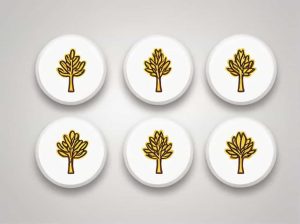The midrib is a crucial part of a plant’s leaf playing an essential role in providing support transporting nutrients and maintaining the overall structure of the leaf. Whether in small herbs or large trees the midrib ensures the efficient distribution of water and nutrients enabling plants to thrive.
This topic explores the definition functions structure and significance of the midrib in plants.
What is the Midrib in Plants?
The midrib is the central vein of a leaf running from the base to the tip. It is the thickest and most prominent vein providing structural support and serving as the main pathway for nutrient and water transport.
Key Characteristics of the Midrib
- Location: Found at the center of the leaf extending from the petiole.
- Structure: Composed of vascular tissues including xylem and phloem.
- Function: Supports the leaf and transports essential nutrients.
Functions of the Midrib
1. Providing Structural Support
The midrib acts as the backbone of the leaf keeping it upright and preventing it from wilting. This support is crucial for maximizing exposure to sunlight which is essential for photosynthesis.
2. Transporting Water and Nutrients
The midrib contains vascular tissues:
- Xylem: Transports water and minerals from the roots to the leaf.
- Phloem: Distributes the food produced in the leaf to other parts of the plant.
3. Facilitating Photosynthesis
By keeping the leaf properly positioned the midrib helps in absorbing optimal sunlight. This enhances the efficiency of photosynthesis the process by which plants convert sunlight into energy.
4. Enhancing Leaf Durability
The midrib strengthens the leaf against environmental factors such as wind rain and physical damage. In some plants a strong midrib also deters herbivores from eating the leaves.
Structure of the Midrib
The midrib consists of several key components:
1. Epidermis
The outer layer of the midrib provides protection and helps in reducing water loss. It may also contain trichomes (small hair-like structures) for additional defense.
2. Vascular Bundles
The midrib houses vascular tissues that include:
- Xylem: Found towards the upper side of the midrib responsible for water transport.
- Phloem: Located below the xylem responsible for transporting food.
3. Parenchyma Cells
These cells surround the vascular bundles and play a role in food storage and minor support.
The Midrib in Different Types of Plants
1. Dicotyledonous Plants (Dicots)
In dicots the midrib is often well-developed and prominent as seen in plants like hibiscus sunflower and mango. The venation is reticulate (net-like) branching from the midrib into smaller veins.
2. Monocotyledonous Plants (Monocots)
In monocots such as grasses bananas and lilies the midrib is usually less prominent and the venation is parallel meaning veins run side by side from the base to the tip.
Importance of the Midrib in Plant Survival
1. Improved Photosynthetic Efficiency
A well-developed midrib ensures that the leaf maintains an optimal angle to absorb maximum sunlight leading to better energy production.
2. Efficient Nutrient Transport
The midrib’s vascular system ensures a steady flow of water and nutrients keeping the leaf and the entire plant healthy.
3. Protection Against Environmental Stress
Strong midribs prevent leaves from tearing easily allowing plants to withstand harsh weather conditions.
The midrib is a vital part of a plant’s leaf offering structural support facilitating nutrient transport and enhancing the overall durability of the leaf. Whether in dicots or monocots the midrib plays a crucial role in maintaining the health and efficiency of plants.
Understanding the midrib’s functions helps in appreciating how plants grow and thrive in different environments.



